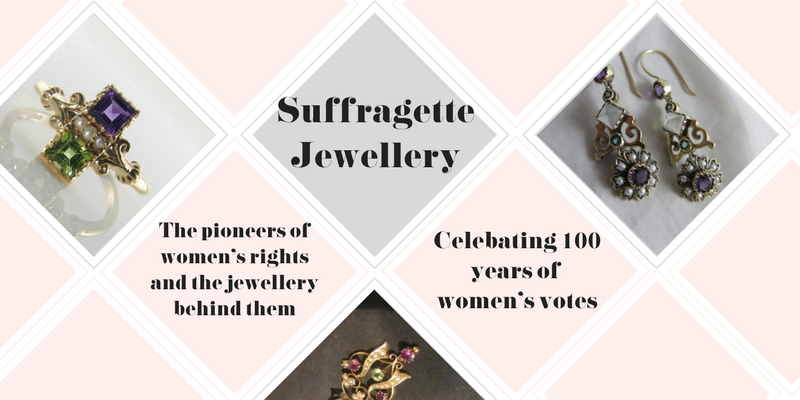It’s been 100 years since the first British women won the right to vote, thanks to the tireless efforts of the Suffragettes.
In honour of this we decided to take a closer look at the women behind the movement and the jewellery that they used to identify themselves, get noticed and make a stir.
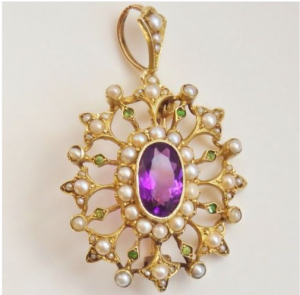
Worn in the years preceding the First World War, Suffragette jewellery came in many forms, including homemade, mass-produced, fine and one-off arts-and-crafts pieces. Its primary purpose was to demonstrate its wearer’s allegiance to the suffragist cause.
Related Blogs: How Will the Pantone Colour of the Year 2018 Impact Jewellery?
The colour scheme, adopted by the WSPU (Women’s Social and Political Union) from 1908, signified the key missions of the movement. This is thought to have been the first campaign group to use specific colours and styles to further their cause.
The violet represented the dignity women were fighting for; Green identified the hope for a brighter future and White symbolised the purity of the women fighting for the cause. Many items of Suffragette jewellery feature peridot, amethyst and diamond.
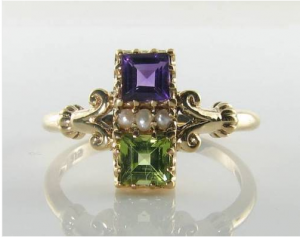
The co-editor of the Votes for Women newspaper, Mrs Pethick Lawrence, was quoted in 1908 explaining her interpretation of the colours of the WSPU: “Purple as everyone knows is the royal colour. It stands for the royal blood that flows in the veins of every suffragette, the instinct of freedom and dignity… white stands for purity in private and public life…green is the colour of hope and the emblem of spring.”
Related Blogs: 5 Top Tips to Create a Stronger Jewellery Brand
When it came to using styles to further the cause, it was in fact Sylvia Pankhurst, daughter of Emmeline Pankhurst – one of the women’s rights advocates behind the movement, whom designed the iconic Holloway Brooch (Meryl Streep wore a copy in the 2015 film, Suffragette). The brooch depicts the ‘portcullis’ symbol of the House of commons, hanging chains and an arrow – symbol of convicts – in honour of the suffragists who served time in Holloway Prison.
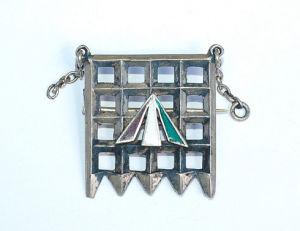
Fashion at the time of the Suffragette movement had an emphasis on delicate femininity – a language that the suffragists successfully captured in order to increase the appeal of the movement and to dodge any stereotype of ‘masculine’ women’s rights campaigners.
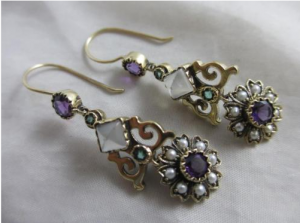
Cally Blackman, a fashion lecturer at Central Saint Martins, noted in the article, “How the suffragettes used fashion to further the cause” (The Guardian, 8 October 2015): “Membership numbers grew, and it became fashionable to identify with the struggle for the vote, even if only by wearing a small piece of jewellery picked out in semi-precious coloured stones or enamel.”
What you can take away from these beautiful pieces is that there was definitely more to them than meets the eye. Worn by some of the most inspiring, influential women in the world, they were a powerful tool in the fight for women’s rights.
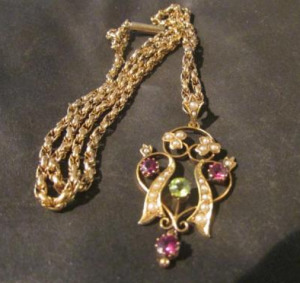
IJL is #withyou offering essential jewellery industry advice, guidance and support for emerging companies, designer-makers and international brands. Speak to our team to find out more.

